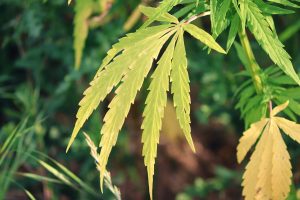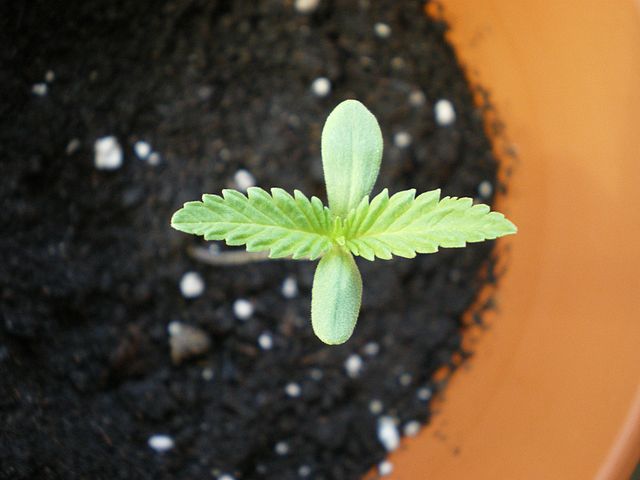Many factors contribute to the healthy growth of cannabis plants. Good lighting, airflow, nutrients, and human capital are all key in the optimal development of any crop.
Water is an essential ingredient in keeping weed plants healthy, strong, and happy. The watering process is not as simple as it seems. Watering weed is a balancing act— you give just the right amount. Too much, and the growth medium will be over saturated, too little and the plants will starve and wither.
If you want a practical guide on how to water your plants well without the risk of overwatering and under watering, read this article.
Table of Contents
Overwatering Cannabis
One of the most common problems weed growers face is feeding their weed with too much water hence overwatering them. There are many reasons why weed plants can become overwatered. The main one being inexperience. A beginner is likely to overwater the plant under the illusion that feeding the plant more water is good for its growth.
As much as water is essential to growth, too much of it washes away the nutrients and affects aeration of the medium.
How Do You Fix Overwatering in Cannabis Plants?
When you realize your weed is overwatered, the best thing you can do for your plants is to increase the time between watering. Do not water your plants until the top layer of the medium is dry. After the plant has healed, you can go back to your normal watering schedule. Ensure that the water can quickly drain to prevent waterlogging.
Causes of Overwatering
Overwatering can easily occur when the weed plants are grown in a poor-draining medium. If you use a medium that holds water for long, by the time you’re adding more water, the plant will still have more water to absorb, resulting in waterlogging.
Poor lighting can also slow the loss of water though evaporation, hence more water, more problems.
Also, overfeeding can result in waterlogged medium— most nutrients are fed to the plant as solutions— most growers never realize the water counts.
Dangers of Overwatering
The right balance of watering volume and frequency is crucial for healthy weed plants. Too much water starves the roots of oxygen, causing them to weaken over time.
If not treated quickly, overwatering can lead to the quick deterioration of your weed plants. When roots are deprived of oxygen, they easily rot. Root rot attracts subterranean root aphids, and mold which are a favorite of fungus gnats.
Recognizing the symptoms of overwatering, knowing how to fix the problem, and best practices to avoid it are invaluable skills to any successful weed grower.
Signs of Overwatering Cannabis
Visual cues are the first indicators that a weed plant is being overwatered, usually appearing within hours. Plants that are overwatered appear droopy. Other symptoms such as yellowing of leaves may be confused for other problems. If you see the signs below combined with droopiness, there’s a chance that you are dealing with overwatering, especially when they seem to get worse soon after watering.
Brown Leaf Edges
This symptom is usually associated with nutrient burn. However, the difference is that overwatering results in browning along the leaves’ edges, while nutrient burn causes browning only at the leaves’ tips.
Yellowing

Weed plants bleach and become yellow when under light stress. Therefore, when your plant is at the right distance from the light, are fed proper nutrients, and still becomes yellow, it may be overwatered.
Curling
Curling or cupping of leaves is a common symptom of heat stress. Overwatering can, however, cause top leaves to curl down and bottom leaves to curl up.
Stunted Growth
Undersized or short plants are a symptom of overwatering in a large container.
Heavy Leaves
Overwatered plants tend to feel thick to touch due to moisture-heaviness, unlike healthy leaves, which feel papery between the fingers.
Mildew
Weed plants that are overwatered tend to have powdery mildew across their leaves due to too much moisture.
Topsoil issues
Examining the soil can give you a sure diagnosis whether you are overwatering. The topsoil could have fungus gnats, green algae; it may appear wet or turned solid.
How to Fix Overwatering
When you realize that you have overwatered your weed plants, you should dry out the grow medium as soon as possible. You can do this by giving them time between the watering times and slowly watering until things normalize.
Wait for the top layer of the soil to look and feel dry before watering again. You can check by probing the topsoil with your finger up to the knuckle and water again if it is dry. Make sure that excess water can easily drain from the bottom of potted weed plants.
How to Avoid Overwatering
Overwatering can be avoided by monitoring soil saturation. Ideally, you should use moisture meter, but feeling the soil— examining the top layer for dryness should tell you when to water.
Since the plants’ most significant risk from overwatering is lack of oxygen, increasing airflow and drainage in the soil is vital.
In Conclusion
Watering weed plants should be done systematically so that the plants can fully benefit from the water. Too much of everything is poisonous, and so is water to your weed plants.

